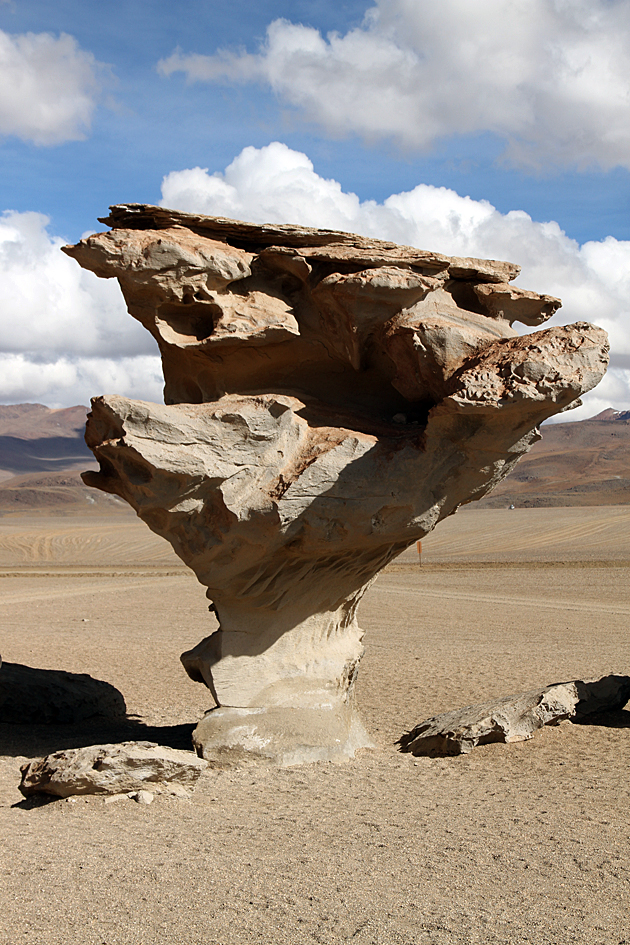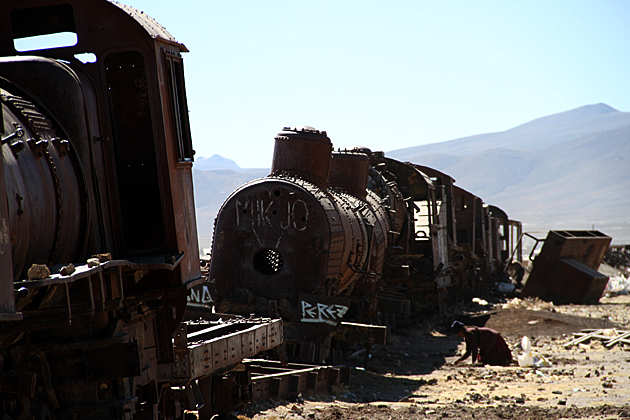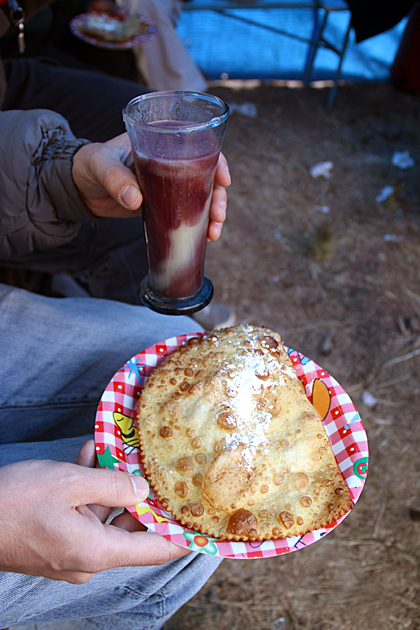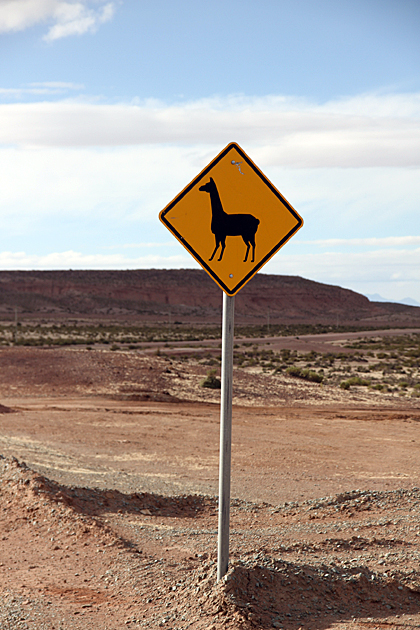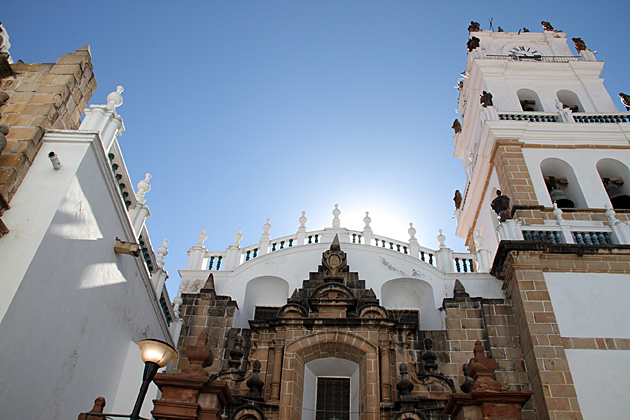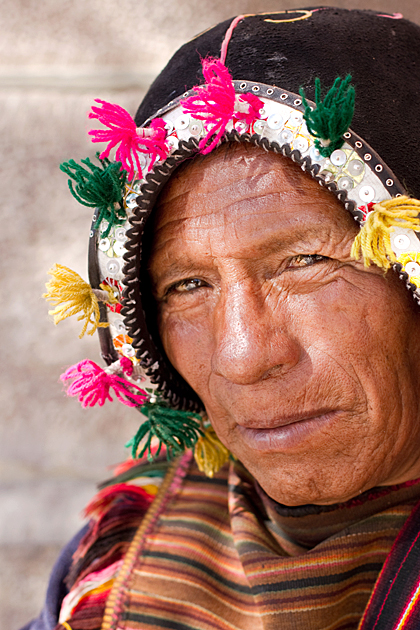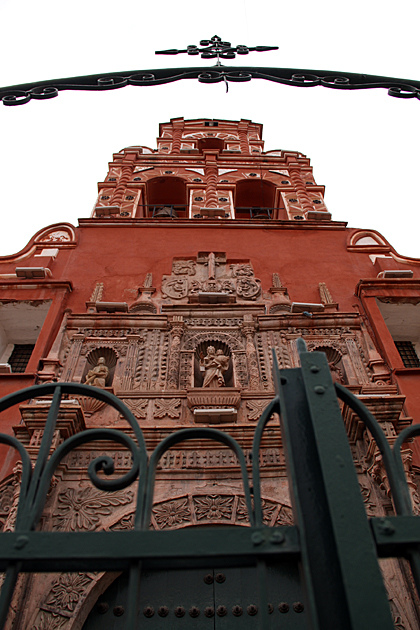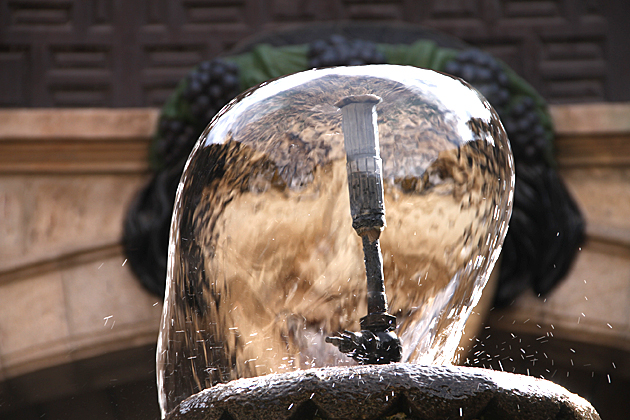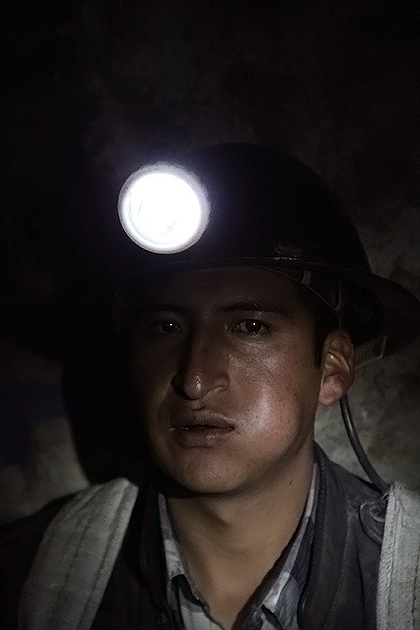The Chiguana Desert, Rock Trees and Lagoons
On the second morning of our trip from Uyuni, we awoke with sore backs and cold toes after having spent the night in a salt hotel. The place was built entirely from the stuff: salt tables, salt floors, salt walls. Instead of sleeping, I spent the night licking my bed. But we loaded our tired bodies dutifully into the jeep and, within no time, had reached the desert of Chiguana. Shrubs, sand and the occasional llama were our only companions as we cut southwest through one of Bolivia's most underdeveloped corners.
